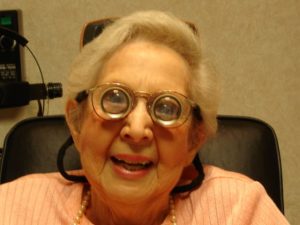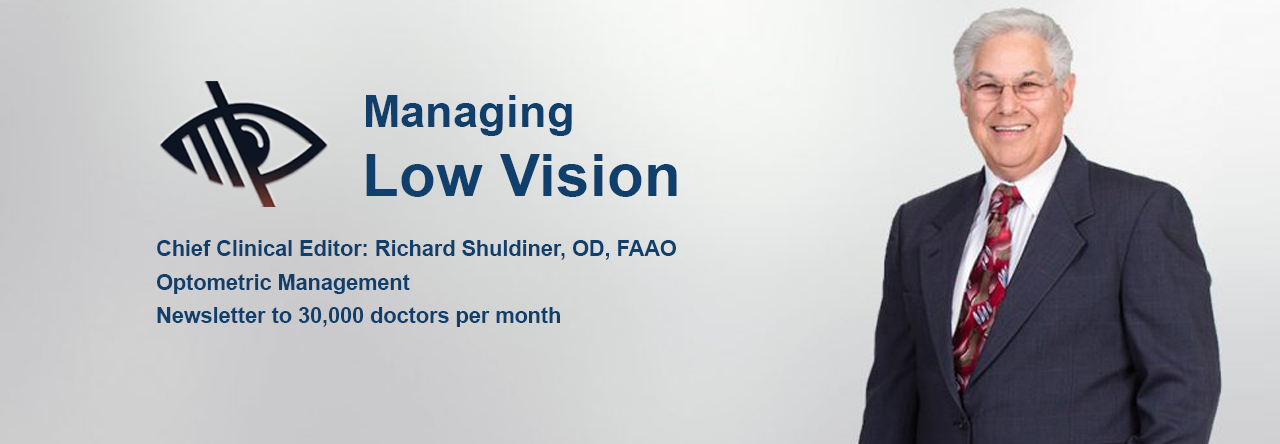April 2020
By Richard J. Shuldiner, OD, FAAO, Chief Clinical Editor
 The coronavirus COVID-19 pandemic is affecting all of us, albeit some more than others. Consider the plight of those with vision loss. Let us consider a widow in her mid-80s with macular degeneration with the best acuity of, say, 20/150 OU. What would it be like to be “quarantined” at home as our officials have recommended?
The coronavirus COVID-19 pandemic is affecting all of us, albeit some more than others. Consider the plight of those with vision loss. Let us consider a widow in her mid-80s with macular degeneration with the best acuity of, say, 20/150 OU. What would it be like to be “quarantined” at home as our officials have recommended?
A senior citizen with vision loss, living alone, would have caregivers assisting her in the skills of daily living. However, being in the most vulnerable age group from the effects of this virus, she would be fearful of leaving the home or allowing these caregivers to enter her home, lest she contracts the virus from a carrier. This would leave her quite vulnerable as she would be unable to accomplish the many important tasks of daily living and having a quality of life.
- She would not be able to read her medicine bottles.
- She would not be able to read cooking instructions, and probably not be able to read the food labels. She could not read expiration dates on food items.
- She would be unable to set the oven dial, microwave dial, see if the water is boiling, or if cooked food is done.
- She would have trouble with the washing machine and dryer.
- She would see a blurred television screen and be unable to read the information flashed on the screen. Even the remote control would be difficult to use.
- She could not read her mail nor write checks.
- She might not be able to see the numbers on her mobile phone.
- She certainly could not pass the time by reading her favorite novels or magazines.
THE BENEFITS OF LOW VISION CARE
Had our widow been referred for low vision services, how would her life be different? She would have an appropriate power illuminated hand magnifier to read medicine bottles, food labels, expiration dates, oven dials, the TV remote, her cell phone, etc.
She would have a pair of full diameter prescription telescope glasses for watching television, reading the information on the TV screen, and enjoying scenery looking out of the window or sitting on her porch.
She would have a pair of microscope glasses for reading novels, magazines, and mail. She would be able to write checks to pay her bills.
She might have a software program to magnify and improve the contrast of her computer screen. She could then read her emails, surf the web, order groceries and other household items, as well as enjoy restaurant deliveries.
QUALITY OF LIFE
Being “quarantined” at home is not fun for anyone. But for low vision patients, it could be dangerous and even life-threatening. Taking the wrong medicine, injecting the wrong amount of insulin, or improperly cooking food are all issues that can cause harm. These can be mitigated with visual aids that allow a person to function.
A simple phrase like “there are low vision doctors who can help” can make a huge difference in someone’s life. “Nothing more can be done” may be true in the medical sense but not in the visual world where low vision glasses, magnifiers, electronics, illumination controls, and more are available.
Those of us in the eye care field would benefit from remembering why the patient is in our chair. THEY WANT TO SEE. They want to be able to do the things they need to do.

